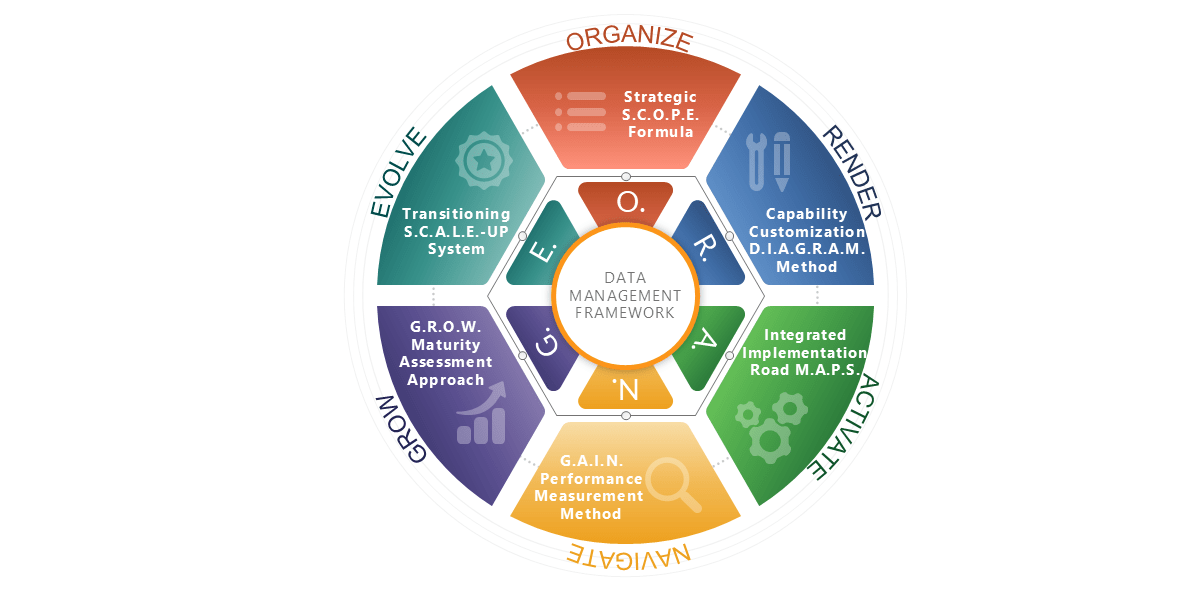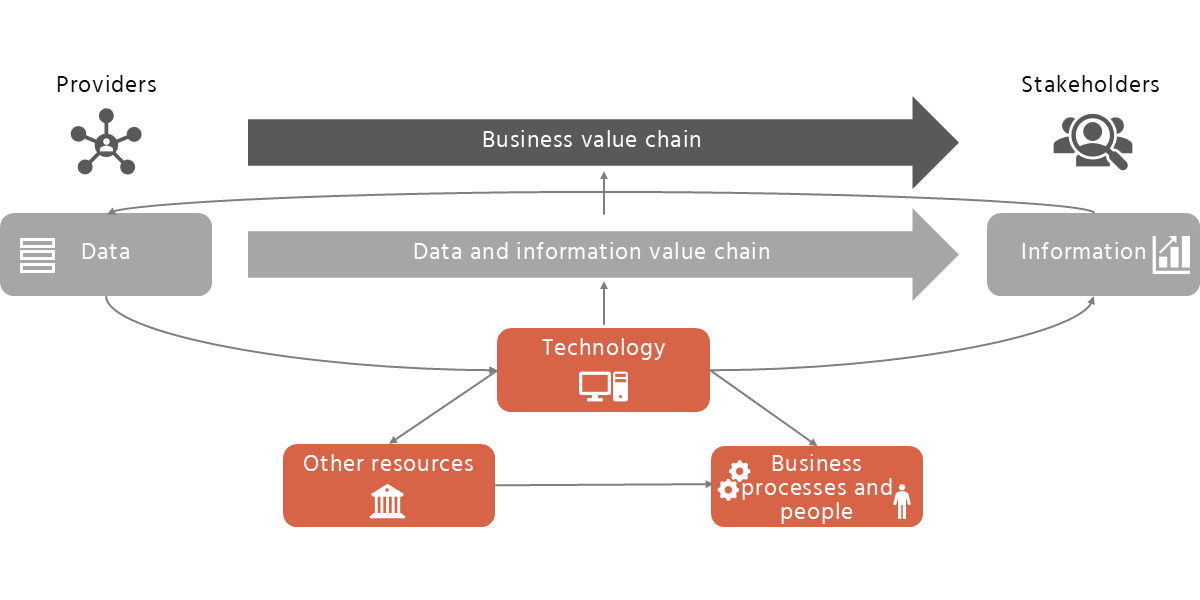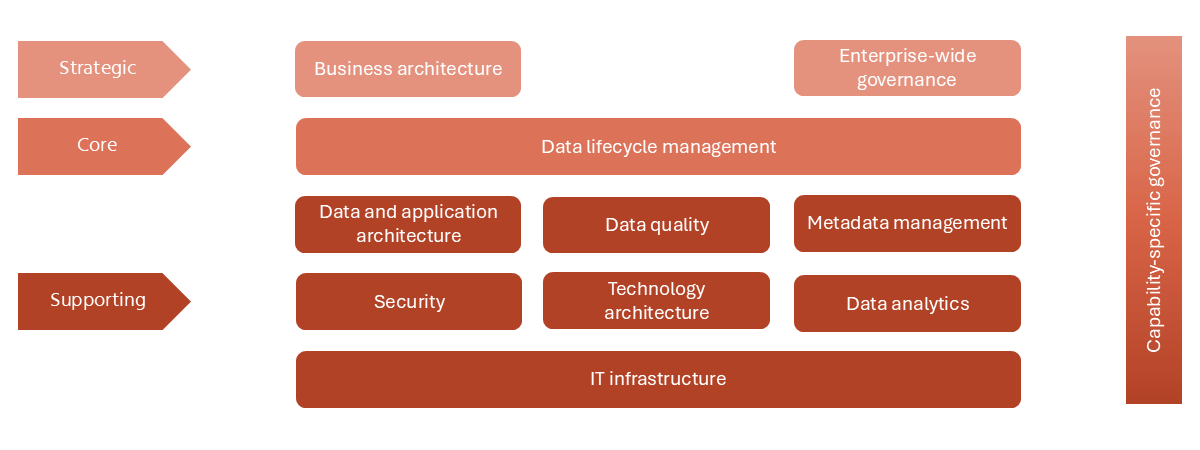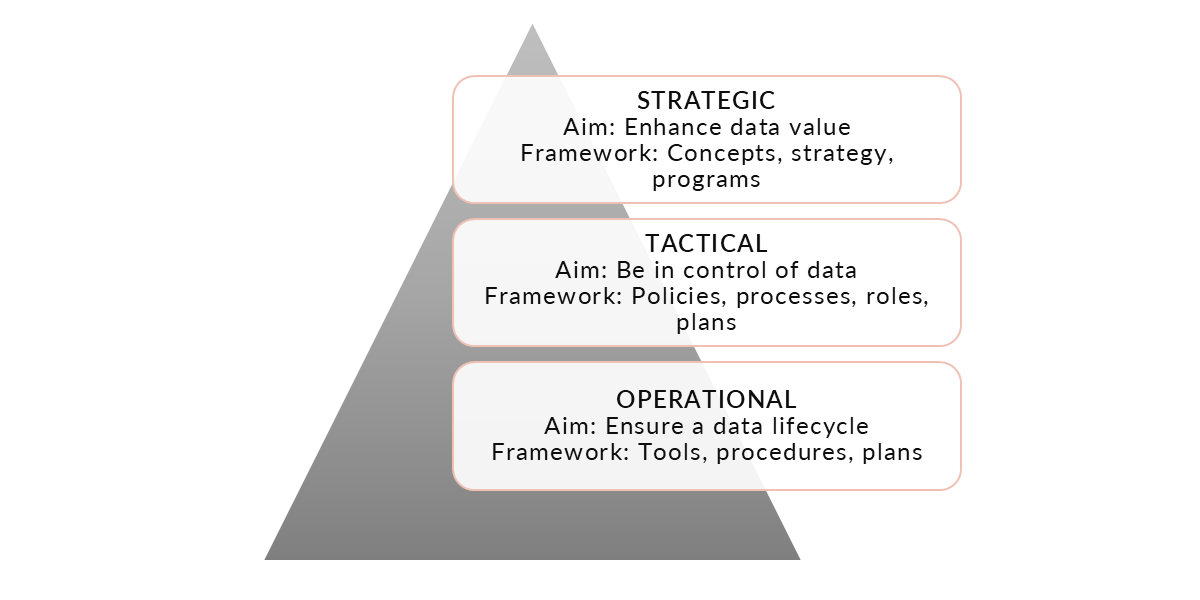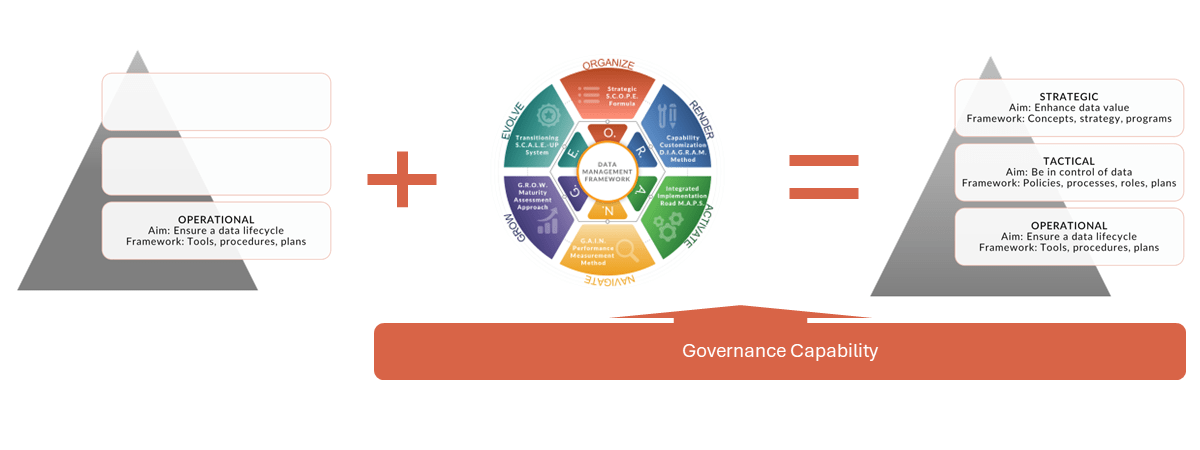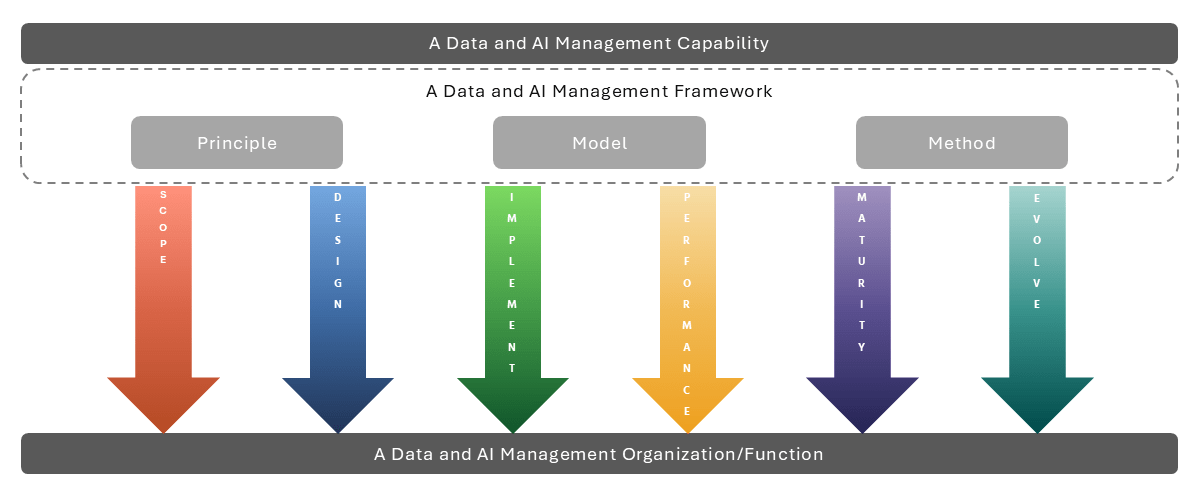Data Crossroads has concolidated its implementation practices into the O.R.A.N.G.E.
Data Management Framework (DMF).
The O.R.A.N.G.E. DMF is a set of principles, models, and methods that an organization uses to establish data and AI management capabilities and integrate them into business functions to achieve the business goals.
We shared the basics of these methodologies in our books and training courses offered in the DC Academy.
This methodology consists of several core building blocks:
The O.R.A.N.G.E. Data Framework Model (DFM) is built on core principles that define its foundational concepts and the relationships between them.
Principle 1: A data management capability is an organization’s ability to protect and manage its data assets while generating value from them by processing data and delivering information to various stakeholder groups. It encompasses the development, execution, and oversight of all activities related to managing the data lifecycle.
Principle 2: The data management capability consists of a structured set of capabilities, organized into several categories and composed of multiple supporting sub-capabilities. A number of core capabilities—such as data governance, enterprise architecture, data quality, metadata management, security, and analytics—are essential for the success of any data and AI initiative.
The O.R.A.N.G.E. Data Management Framework (DMF) consists of several integrated models, each supporting a key aspect of designing, implementing, and managing a scalable and tailored data management capability:
Model of a Data Management Capability (Principles 1, 2, and 3):
Supports the scoping of a data management capability that aligns with the organization’s goals, needs, and resources. It provides a foundation for tailoring external frameworks and standards to fit the organization’s specific context.
Model of the Constituent Components of a Data Management Capability:
Guides the operationalization of the capability by identifying and structuring the key building blocks—such as policies, processes, roles, artifacts, and enabling technologies—required to establish data management as a business function.
Model for Measuring Data Management Maturity and Performance:
Enables organizations to evaluate the maturity and effectiveness of their data and AI capabilities. It supports continuous improvement by linking capability development to measurable outcomes and business impact.
Metadata Model: Metadata, Data Lineage, and the DM Knowledge Graph:
Integrates metadata management, data lineage, and knowledge graph practices to document how data flows and is governed across the organization. This model reflects the insight that framework implementation and lineage documentation share the same foundation—common artifacts and logic—making them interdependent activities.
The O.R.A.N.G.E. Data Management Framework (DMF) provides an integrated implementation method for a wide range of data- and AI-related initiatives.
These initiatives include, but not limited to:
- Developing and aligning data, metadata, and AI strategies
- Designing an enterprise-wide governance framework or function
- Establishing governance components for core data management capabilities by defining roles, rules, and processes for each capability
- Harmonizing data, metadata, and AI frameworks
- Building a business case for metadata management, including the implementation of data catalogs, data lineage, and knowledge graphs
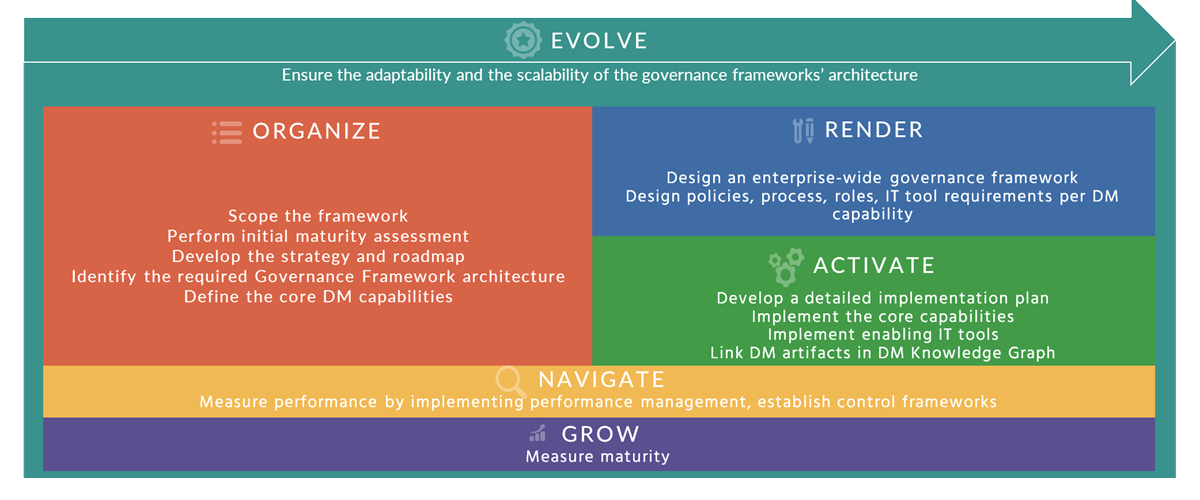
This implementation method is grounded in the logical dependencies among core data management capabilities and their supporting artifacts. It can also be applied to a variety of industry frameworks and adapted to fit an organization’s specific needs and resources.
The method is structured around six core phases. Each phase introduces its own models and methods to guide implementation:
- ORGANIZE – Define the initiative’s scope and develop a strategy and roadmap
- RENDER – Design an enterprise-wide governance framework for core data management capabilities
- ACTIVATE – Develop an integrated implementation plan
- NAVIGATE – Establish data management performance management
- GROW – Measure data management maturity
- EVOLVE – Establish a highly adaptive data management environment


